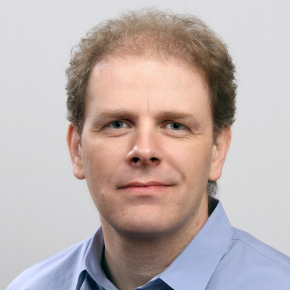The CNRS Institute of Chemistry welcomes Frieder Jäkle as an Ambassador in Chemical Sciences
On February 21 2024, Frieder Jäkle, Distinguished Professor in Chemistry at Rutgers, The State University of New Jersey, will start a series of lectures in several French CNRS laboratories as the Ambassador in Chemical Sciences in France. Professor Jäkle’s research focusses on the development of new functional molecular and polymeric materials with interesting and unusual optical, electronic, catalytic, sensory, or stimuli responsive properties. Here, he tells us all about boron and organoborane chemistry.
What makes Boron such an interesting element for the synthesis of functional organic materials?
Situated to the left of carbon in the periodic table, Boron has one electron less available for bonding. It hence forms electron-deficient compounds that give rise to unique and interesting bonding scenarios. One notable example is the ability of boron to engage its three valence electrons in p-delocalization with organic substituents. Electrons in these compounds are readily excited by external stimuli, with a dramatic impact on optical and electronic properties. Absorption and emission of long wavelength light and easier charge carrier transport are among the most interesting consequences for the design of functional organic materials. The electron-deficient character of boron also enables dynamic exchanges of electron pairs with electron rich compounds (Lewis acid-base interactions). These can be harnessed in various stimuli-responsive applications like sensing, molecular switches, and in supramolecular materials.
What future outcomes do you expect in the next 5 to 10 years for this chemistry (or materials)?
Recent advances in synthetic strategies for embedding or attaching boron to organic molecular and polymeric materials have opened up tremendous opportunities on the applications front. I foresee major advances for the use of boron-containing p-systems in organic electronics and bioimaging. The realm of boron-containing polymers has also witnessed remarkable diversification, with a myriad of applications under exploration, including polymer-supported reagents and recyclable catalysts in organic synthesis, carbohydrate sensors, tumor hypoxia imaging in the biomedical field, n-type materials for transistors, all-polymer solar cells and solid electrolytes in batteries. A particularly exciting area is that of dynamic supramolecular materials where we have seen an explosion of research efforts in recent years. Dynamic covalent and non-covalent bond formation of boron offers opportunities to develop supramolecular materials that behave like polymers but are more easily recycled or upcycled at their end-of-life, while also exhibiting desirable self-healing and shape-memory effects. This is an area where the unique bonding properties of boron might thus have a tremendous impact.
As a CNRS ambassador of Chemical Sciences, what are you most looking forward to during your French conference tour?
It is very exciting for me to meet and reconnect with my colleagues in France. These connections go back so many years, first through a high school exchange program, then as a visiting undergraduate researcher in Marseille, and most recently to, the 17th International Meeting on Boron Chemistry in Rennes. So much impressive research is happening in the field of boron chemistry and of supramolecular and polymeric materials in France. This lecture tour will be a wonderful opportunity to share our work, strengthen our interactions, and hopefully forge some new collaborations. Of course, I also greatly look forward to enjoying the French cuisine together with colleagues and friends – I never can resist a French red wine and delicious cheese.
Written by AVR
